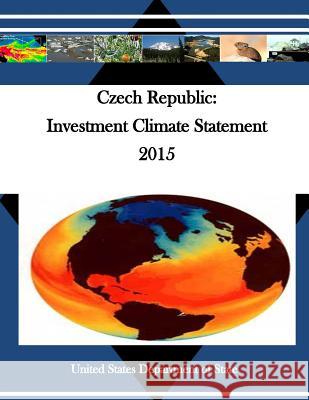Czech Republic: Investment Climate Statement 2015 » książka
Czech Republic: Investment Climate Statement 2015
ISBN-13: 9781530700233 / Angielski / Miękka / 2016 / 26 str.
Czech Republic: Investment Climate Statement 2015
ISBN-13: 9781530700233 / Angielski / Miękka / 2016 / 26 str.
(netto: 56,43 VAT: 5%)
Najniższa cena z 30 dni: 55,53 zł
ok. 13-18 dni roboczych.
Darmowa dostawa!
The Czech Republic is a medium-sized, open, export-driven economy. Around 80 percent of its GDP is comprised of exports - mostly from the automotive and engineering industries. Its strong dependence on foreign demand, especially from the Eurozone, of which it is not a member, was highlighted in the global financial crisis of the late 2000s. However, the Czech banking sector remained relatively healthy. After two years of economic contraction, the Czech economy emerged from recession in early 2013 and enjoyed two percent GDP growth in 2014. Experts predict approximately 2.5 percent growth in 2015. In November 2012, the Czech National Bank (CNB) lowered the two-week repurchase rate to a record low of 0.05 percent, referred to as technical zero, in order to address deflationary pressures. A year later, the CNB launched a foreign exchange intervention to mitigate the risk of continued deflation. Since then, the exchange rate has remained at 27 Czech crowns/1 euro or weaker (27.5 as of April 2015). Accordingly, due to the fall of the euro in 2014, the Czech crown has weakened to 25/1 USD (as of April 2015). The Czech crown is fully convertible and all international transfers of investment-related profits and royalties can be carried out freely without delay. While there has not been significant political momentum toward Euro accession in recent years, the current government under Prime Minister Sobotka has demonstrated a more positive approach to EU integration than any past government. CSSD, Sobotoka's party and the coalition leader, expressed support in March 2015 for joining the Eurozone by 2020. President Zeman is also a strong supporter of Euro accession. The Czech Republic fully complies with EU law and OECD standards for the equal treatment of foreign and domestic investors. Labor laws are comparable with most developed nations, but a gap still exists between wages of Czech individuals and their neighbors in Western Europe. The U.S.-Czech Bilateral Investment Treaty provides for international arbitration of investor-State disputes. Great strides have been taken since the fall of communism to open the market to competition and privatization, but the prosecution of anti-trust violations is still less than adequate. Corruption remains a problem. Czech Intellectual Property Rights (IPR) protections are still not optimal, but the legal framework for IPR protection has been tested and proven successful in punishing infringers. Other western concepts such as entrepreneurship and corporate social responsibility (CSR) are growing trends in the Czech business and NGO communities. There are no general restrictions on foreign investment, although limits exist within certain sectors. The Czech Republic attracts a great deal of FDI for its size, and has taken strides to diversify its traditional investments in engineering into new fields of research, development and innovative technology. In fact, EU structural funding has enabled the country to open a number of world-class scientific and hi-tech centers. Companies from EU member states are the chief foreign investors in the Czech economy, but the government has signaled a desire to seek more export and investment opportunities from non-European regions, including the United States, China, and South Korea.











